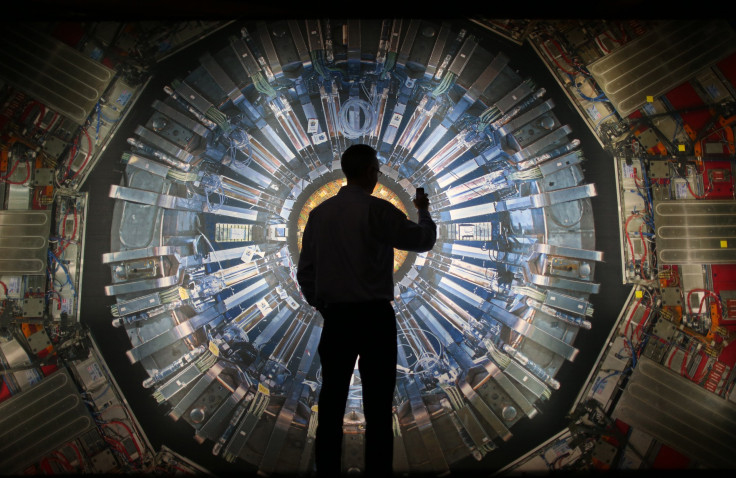CERN LHC Update: The Hunt For Particle That May Break Physics’ Standard Model To Resume Soon

In December, researchers at European Organization for Nuclear Research (CERN) spotted tantalizing clues of a yet-undiscovered particle heavier than the famous Higgs boson. Now, as the Large Hadron Collider (LHC) gets ready to start again, fresh analysis of data gathered during its previous run has strengthened the possibility that the mysterious signals recorded at the time may have been generated by a hitherto unknown particle — one that may finally break the cherished Standard Model of physics.
“If it’s truly a new signal, it’s incredibly interesting,” Marumi Kado, a researcher working with a LHC particle detector, the ATLAS collaboration, told Nature. “It would open up so many possibilities, so many questions. Studying it would be wonderful.”
There are four fundamental forces in the universe — the strong force, the weak force, the electromagnetic force and the gravitational force. Of these, the first three result from the exchange of force-carrier particles, which belong to a broader group called bosons, and whose interactions — both among themselves and with matter particles such as quarks and leptons — are explained by the Standard Model.
In 2012, with the discovery of the Higgs boson — responsible for imparting mass to all other particles — scientists believed the last missing piece that completed the Standard Model had been found. However, even the completed version of this theory fails to incorporate gravity, and explain the origin and preponderance of dark matter and dark energy in the universe.
So, in 2015, scientists restarted the LHC at an unprecedented energy of 6.5 teraelectronvolts per beam — compared to 4 TeV per beam in 2012 — with the aim of either breaking the Standard Model, or bolstering it further. They were also looking for the fabled “graviton” — a force-carrying particle for gravity — and evidence of supersymmetry — an extension of the Standard Model that predicts the existence of more massive “super partners” for every known particle.
In December, CERN researchers announced that both the CMS and ATLAS detectors had unexpectedly found, while sifting through the debris of proton-proton collisions, excess photons carrying around 750 gigaelectronvolts (GeV) of combined energy. This may have been a telltale sign of a particle, about six times more massive than the Higgs boson, decaying into a pair of photons of equal mass.
Now, in fresh analysis disclosed Thursday at a conference in La Thuile, Italy, researchers said a recalibration of the full data set collected by the CMS detector pushed the statistical significance of the signal to 1.6 sigma from 1.2 sigma reported in December. Researchers at the ATLAS collaboration also re-analyzed their data collected during the first run, and now see a 1.9 sigma excess at 750 GeV.
While this is certainly an improvement, it still falls short of the gold standard of five-sigma accuracy needed to confirm the existence of a particle whose discovery might just open the doors to an unknown realm of reality. As a result, confirming or disproving this particle's existence would be the key focus of researchers at CERN when high-energy collisions resume next month.
“The fact that their excess has gone up is a hopeful sign,” Marco Delmastro, a physicist at France’s National Centre for Scientific Research, told Nature, referring to the CMS results. “But caution is necessary. Statistics is a harsh mistress.”
© Copyright IBTimes 2024. All rights reserved.






















